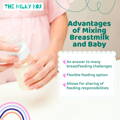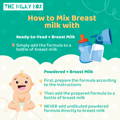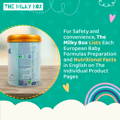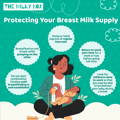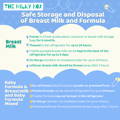Baby formula can be more filling and may cause your baby to take the breast less. Regular breastfeeding at least 8-12 times a day helps you keep a healthy milk supply, especially in the early weeks.
While combination feeding, there are a few tips that will help you keep a healthy milk supply:
🤱Pump or hand express at regular intervals to maintain or build your milk supply.
🤱You can also breastfeed on one breast while pumping on the other.
🤱Do not start combination feeding until you are breastfeeding regularly and well.
🤱If possible, return to work part-time for a week or two before going full-time.
🤱Look for childcare close to work so that you may be able to breastfeed your baby during a break, and your caregiver can offer formula while you are away.

